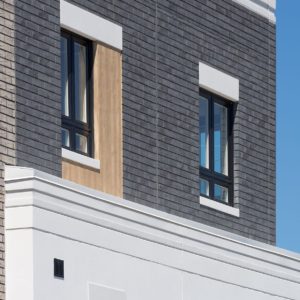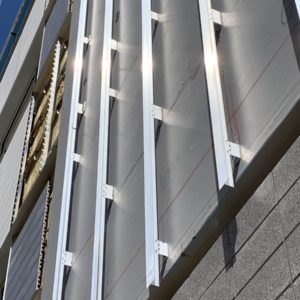Reducing the operational carbon output of buildings has long been an important topic of discussion, but drilling down even further, the architecture, engineering and construction industries are now turning an eye to embodied carbon. Embodied carbon of building materials refers the amount of carbon that is emitted to produce and transport building materials before they hit the jobsite.

Just how big of a factor embodied carbon is to overall commercial building emissions is now coming in to focus. Per Canadian Architect:
According to data from the UN Environment – Global Status Report 2018, the buildings sector is responsible for a full 39% of global energy-related carbon emissions. While it’s true that the majority of these emissions—around 28%—arise from the day-to-day operations of existing buildings, the other 11% come directly from the embodied emissions of constructing new buildings. That 11% slice of the pie is what the buildings industry has mostly ignored—our industry’s blindspot.
In response this, the University of Washington’s Carbon Leadership Forum has launched a new tool to measure the embodied carbon in building materials. The Carbon Leadership Forum boasts financial backing from more than 30 groups and was provided seed funding from Microsoft. Officially launched at the Greenbuild expo in Atlanta this past November, the Embodied Carbon in Construction Calculator (EC3) is a free tool for calculating and evaluating carbon emissions embodied within an array of building products. Per Building Design & Construction:
EC3 is designed to allow contractors, owners, and designers to work together to examine data for common building materials and create an overall embodied carbon footprint for a project as well as a procurement strategy. EC3 is also the first tool to create a digital Environmental Product Declaration form and to translate all EPDs into that form for viewing and analyzing data.
There are steps that building designers and construction professionals can take. Reusing building materials is one step, as is adaptive reuse – where an existing building is repurposed for a use other than its original design.
Structural systems used within a building comprise of the largest source of embodied carbon – up to 80 percent, depending on the building type, according to Building Green. Optimizing concrete, steel and wood in differing ways can reduce impact. Per their article The Urgency of Embodied Carbon and What You Can Do about It:
In all this, it’s important to get the structural engineer involved early. “The form of the building often takes shape even before we get into schematic design,” noted Mark Webster, P.E., a structural engineer with Simpson Gumpertz & Heger. “It would be great if architects would reach out earlier to us [structural engineers] to help them make decisions related to building form and structural materials.” He added, “It’s increasingly obvious, the role that we have to play in terms of embodied impacts with respect to climate change.”


